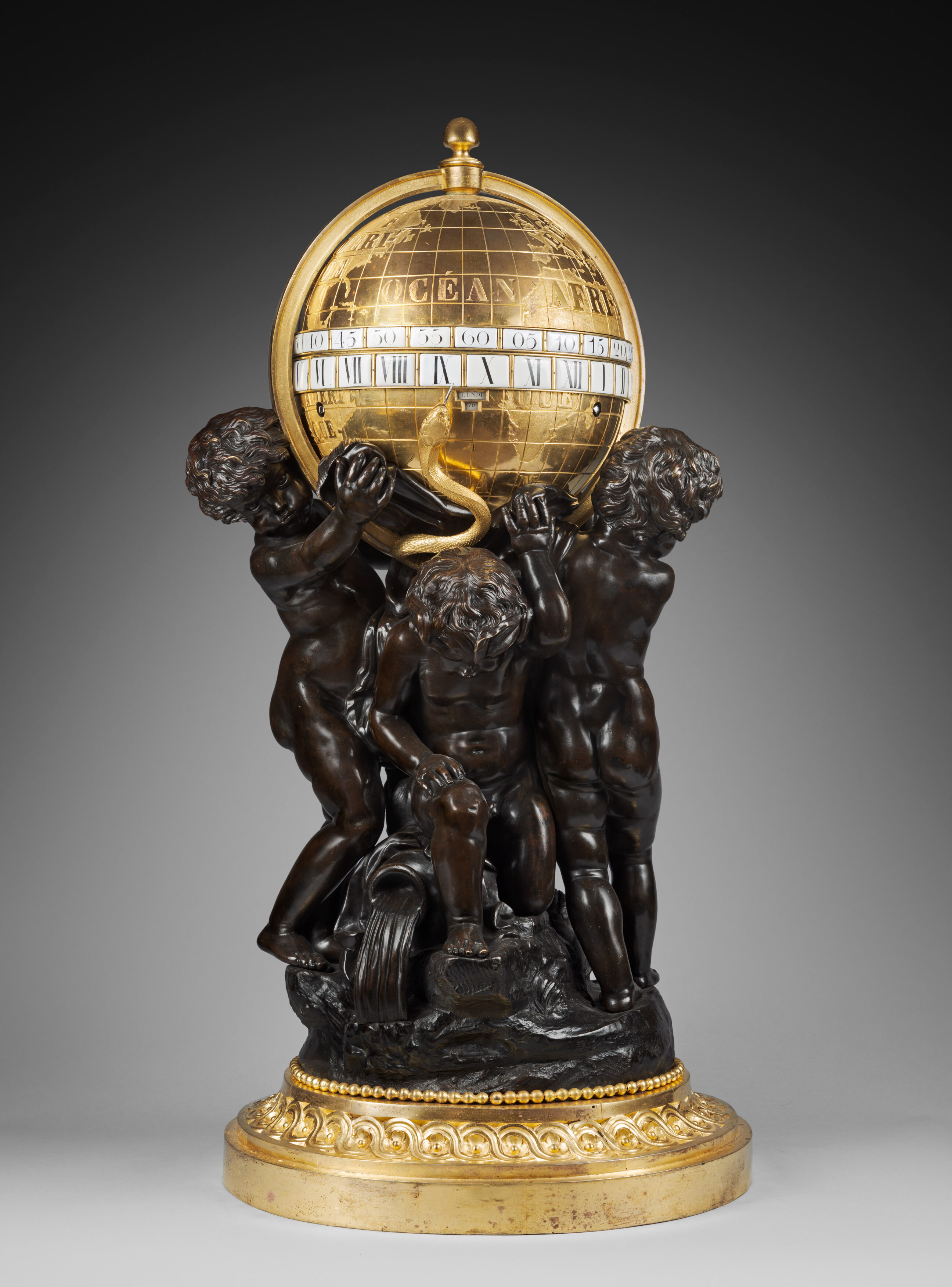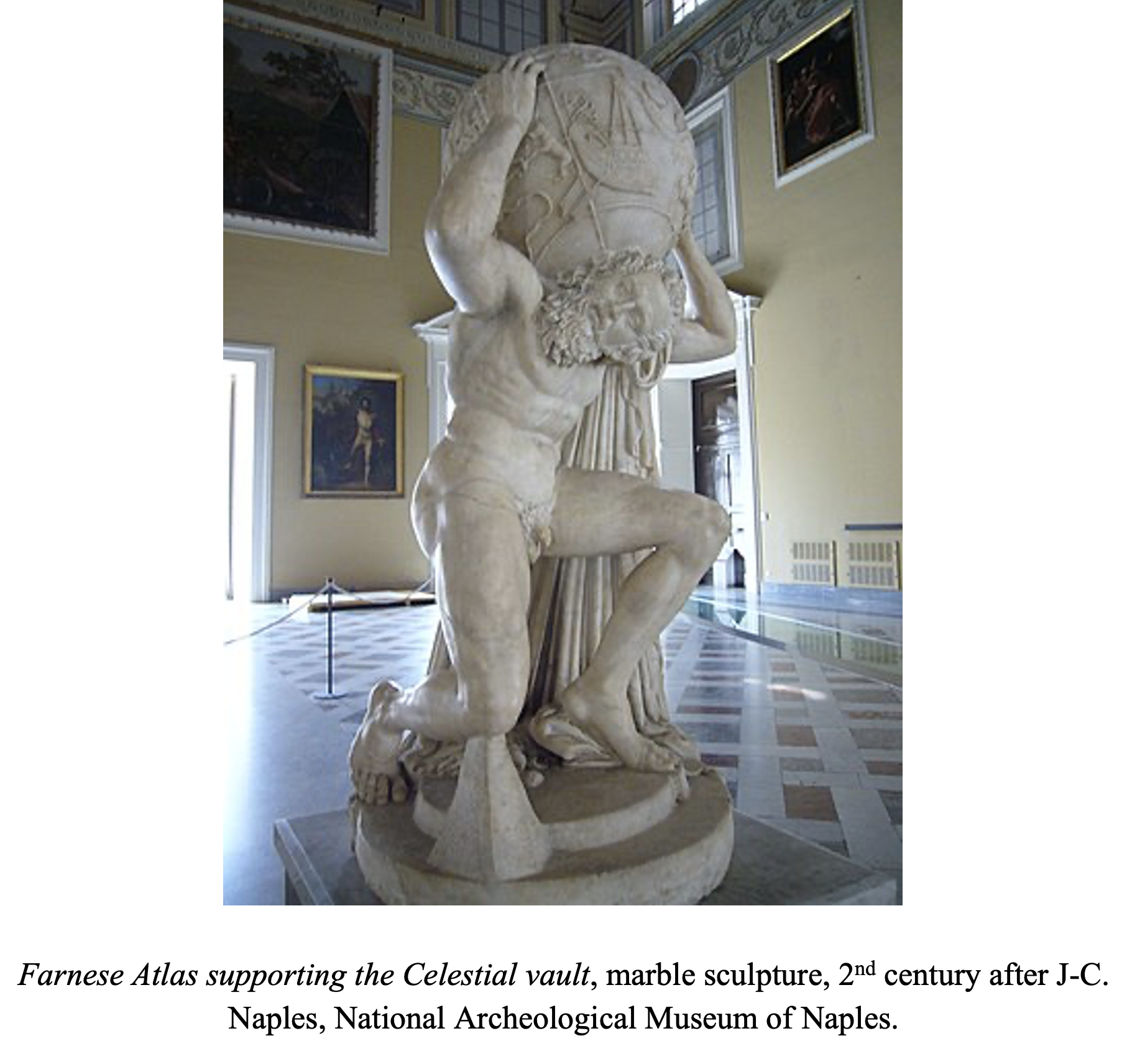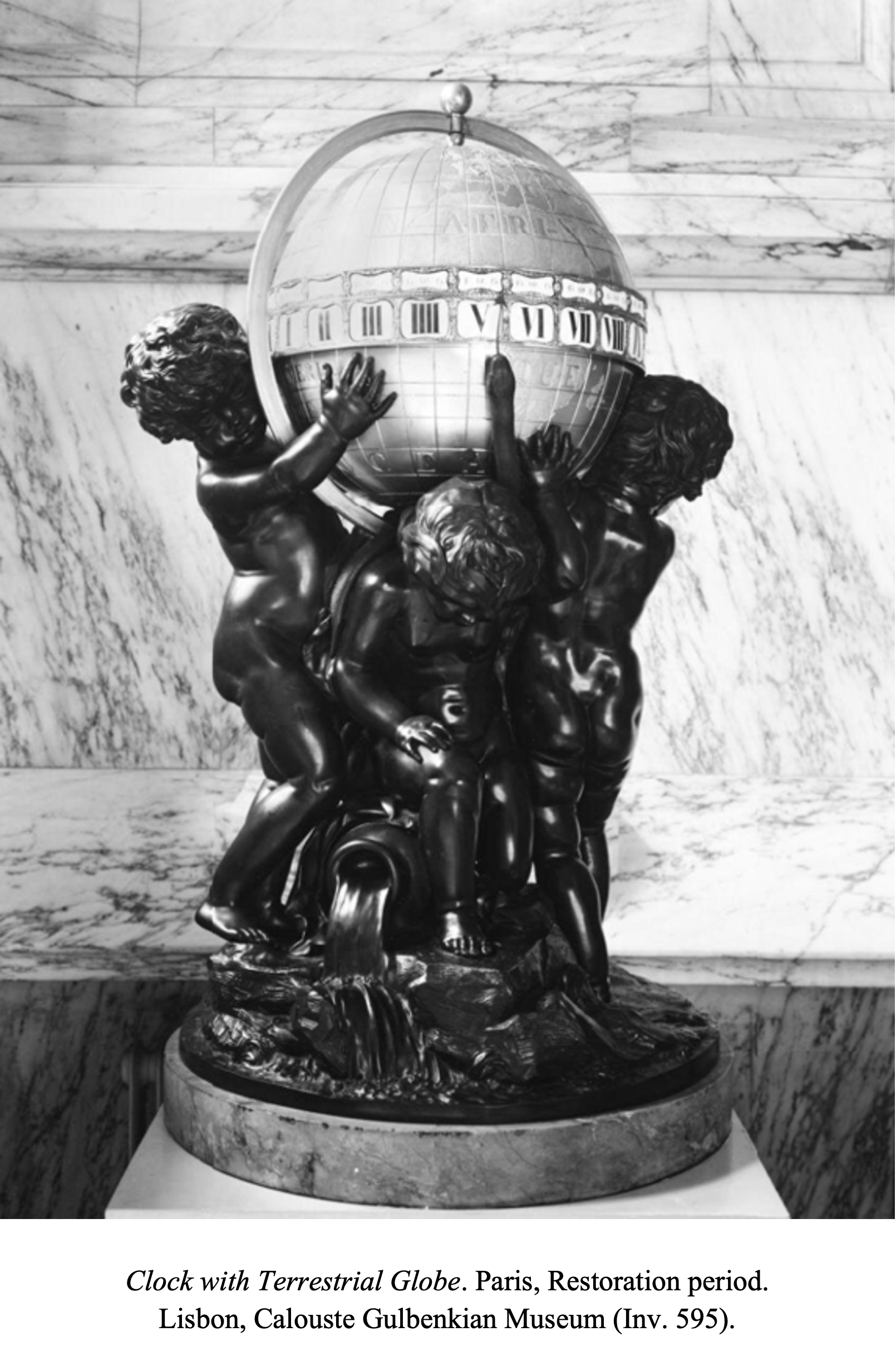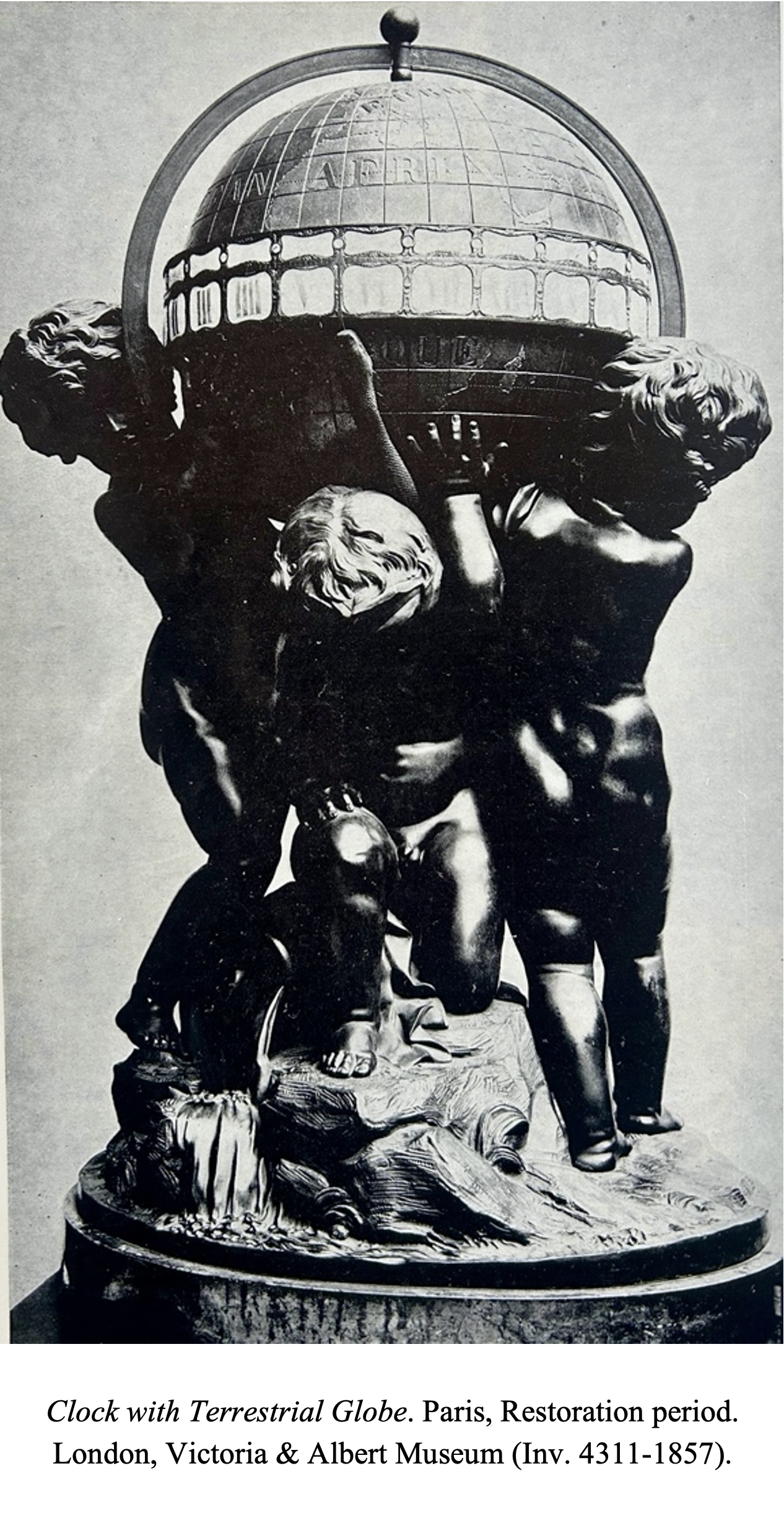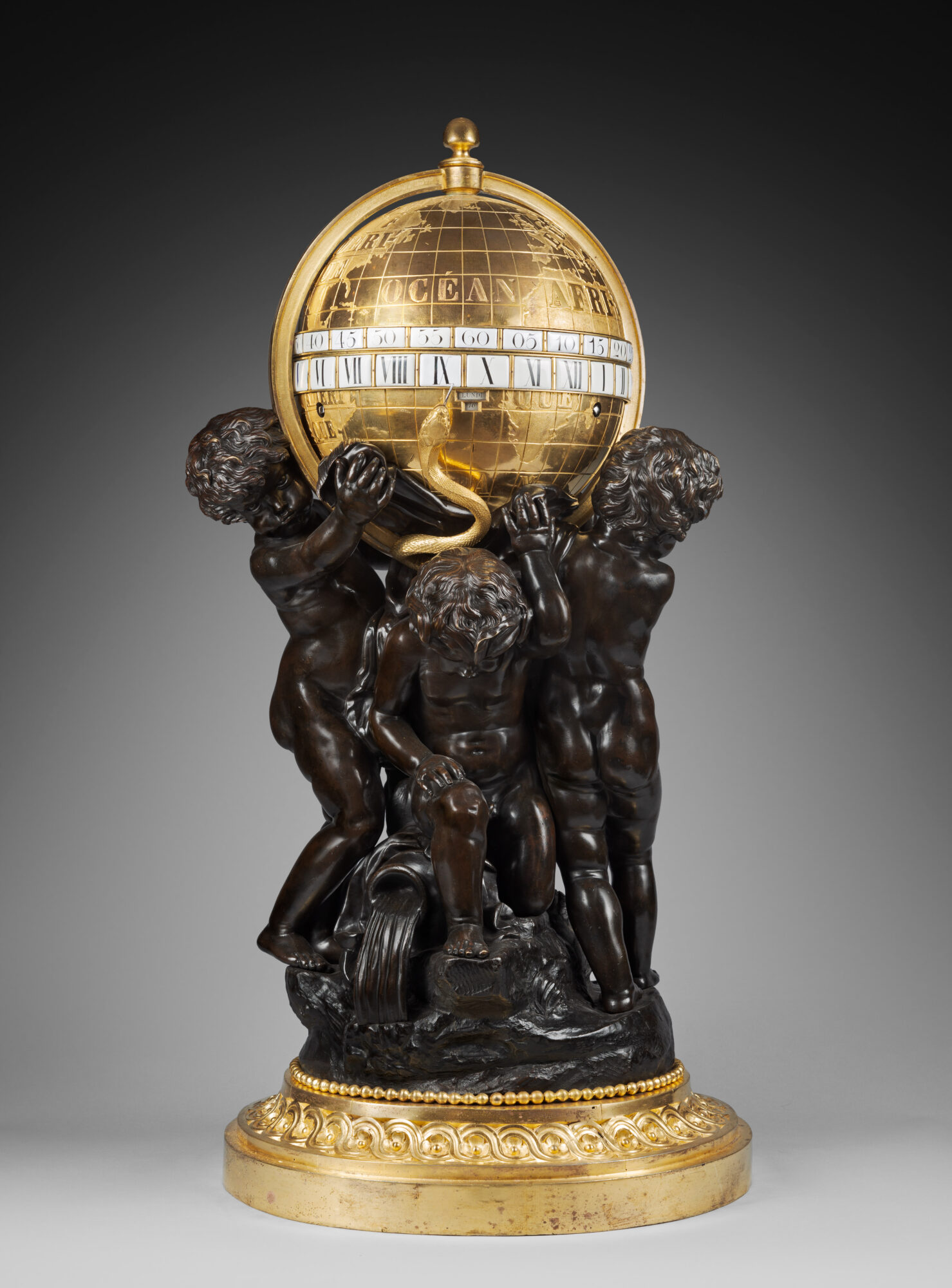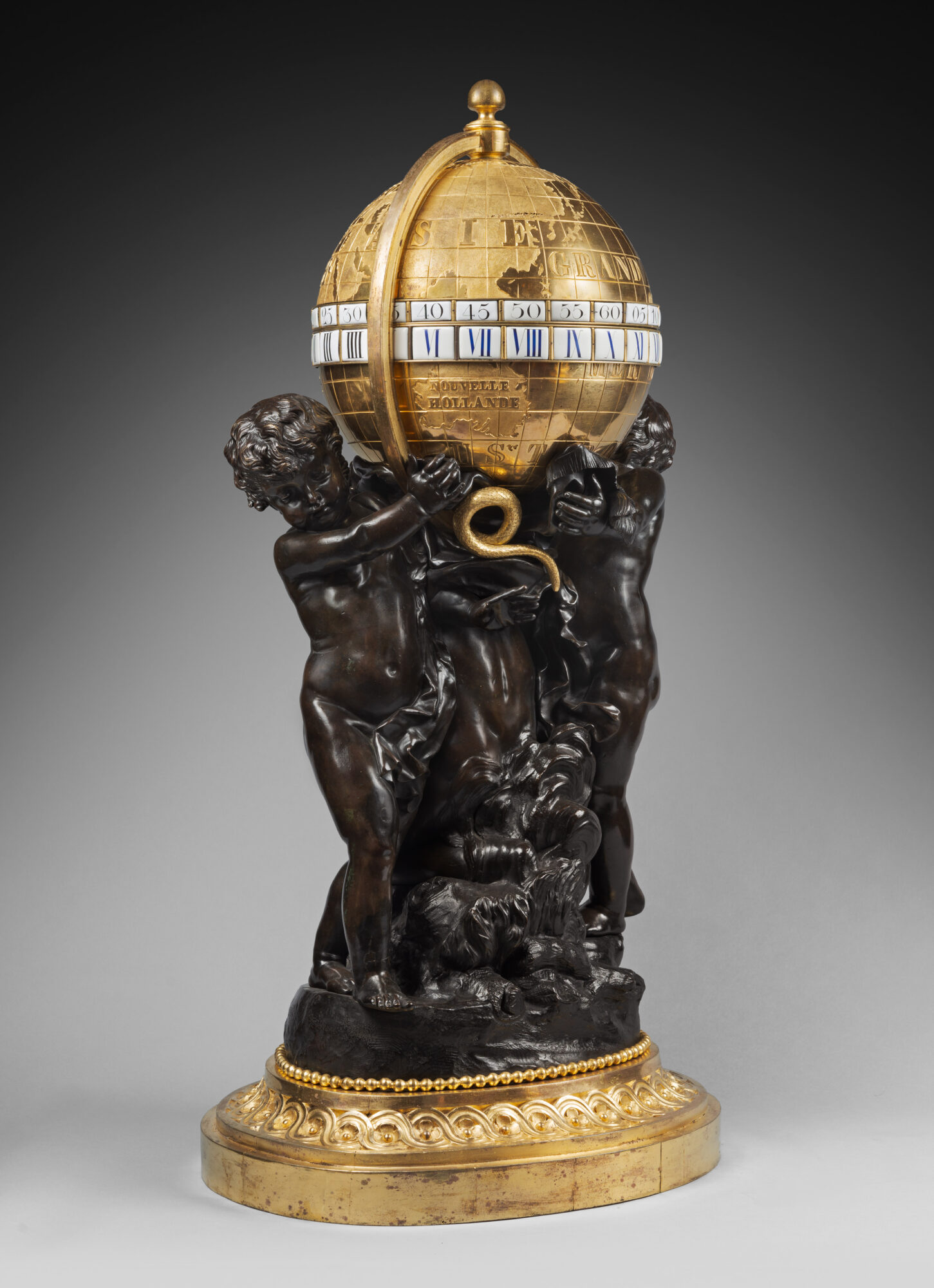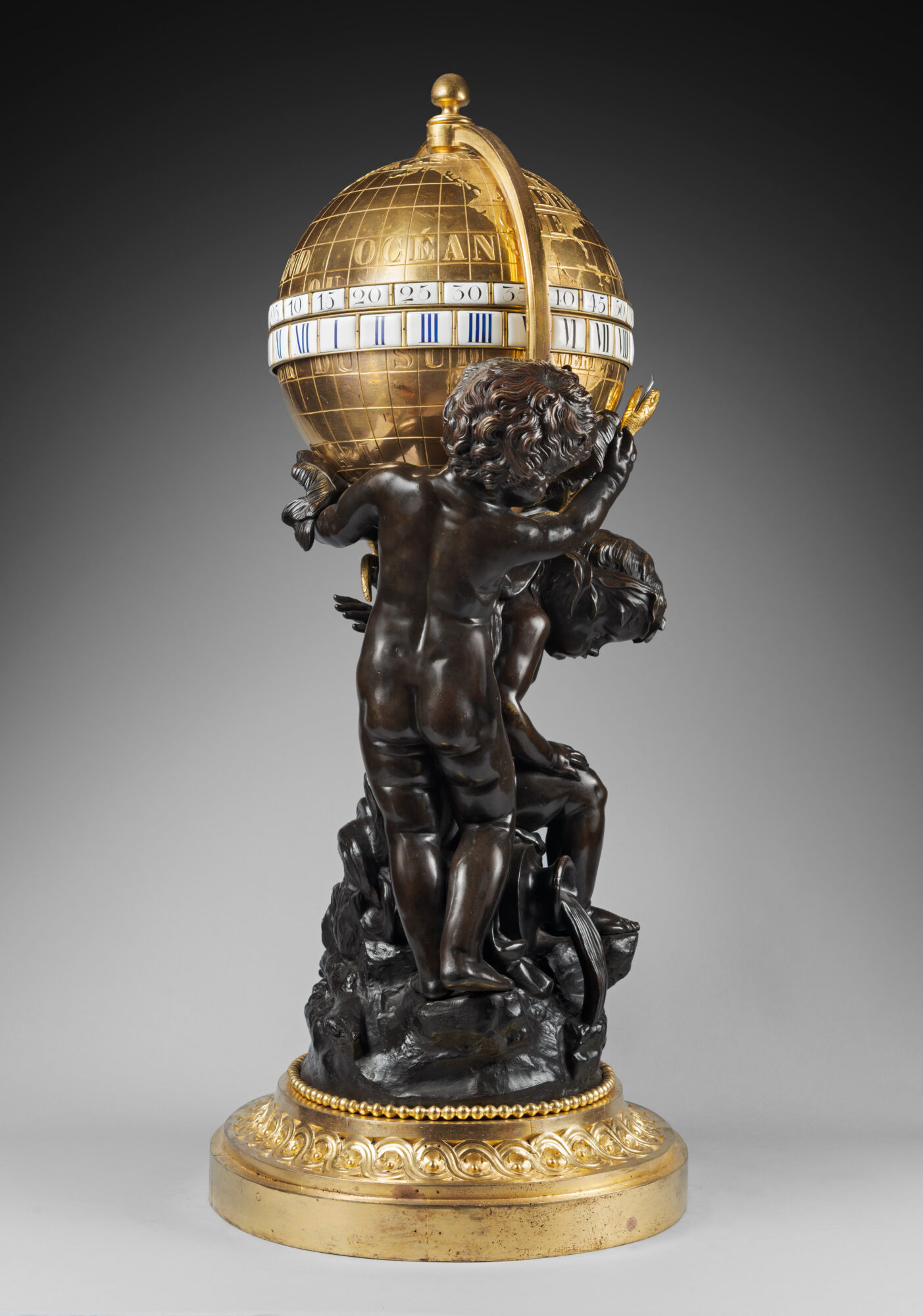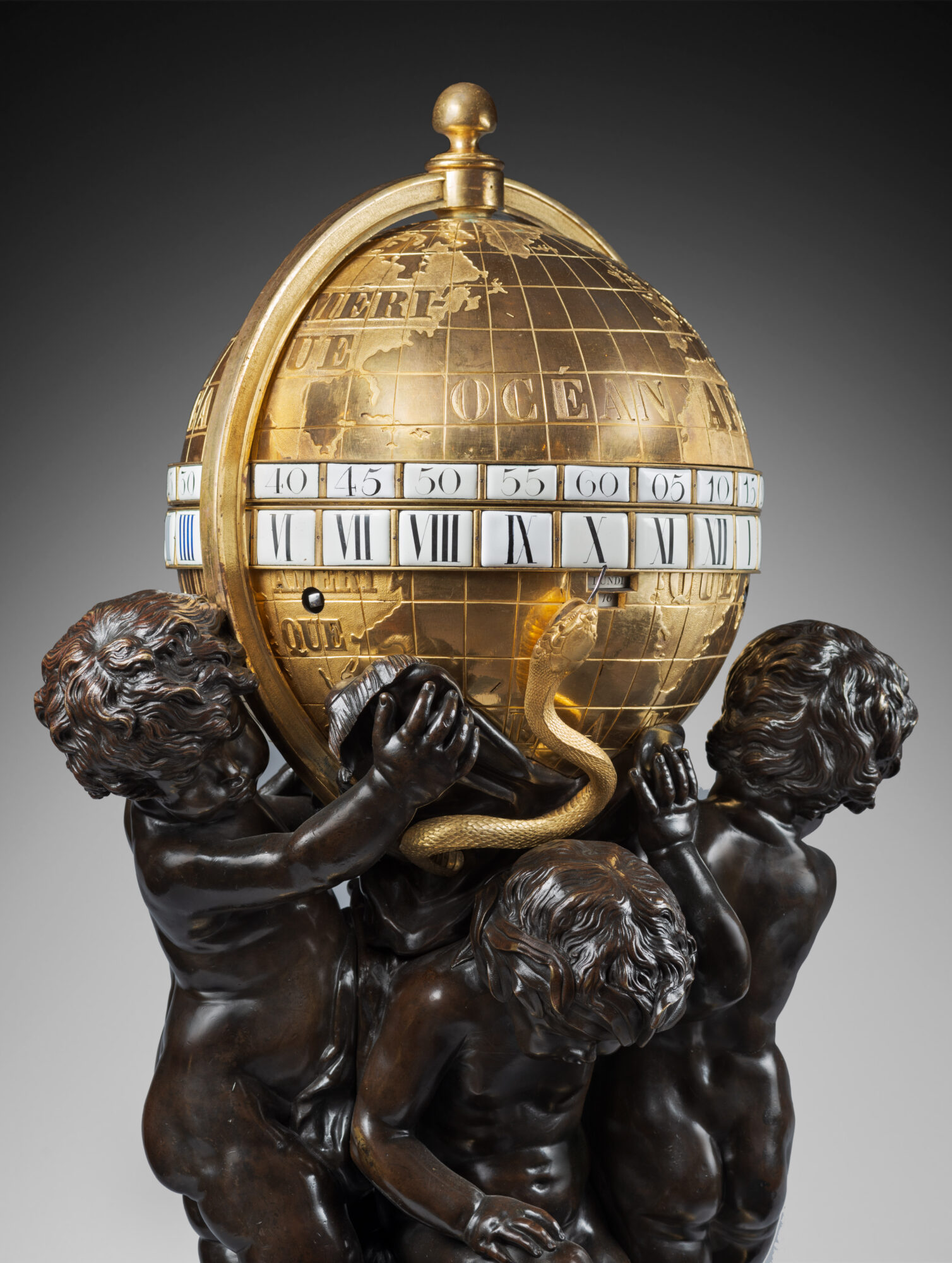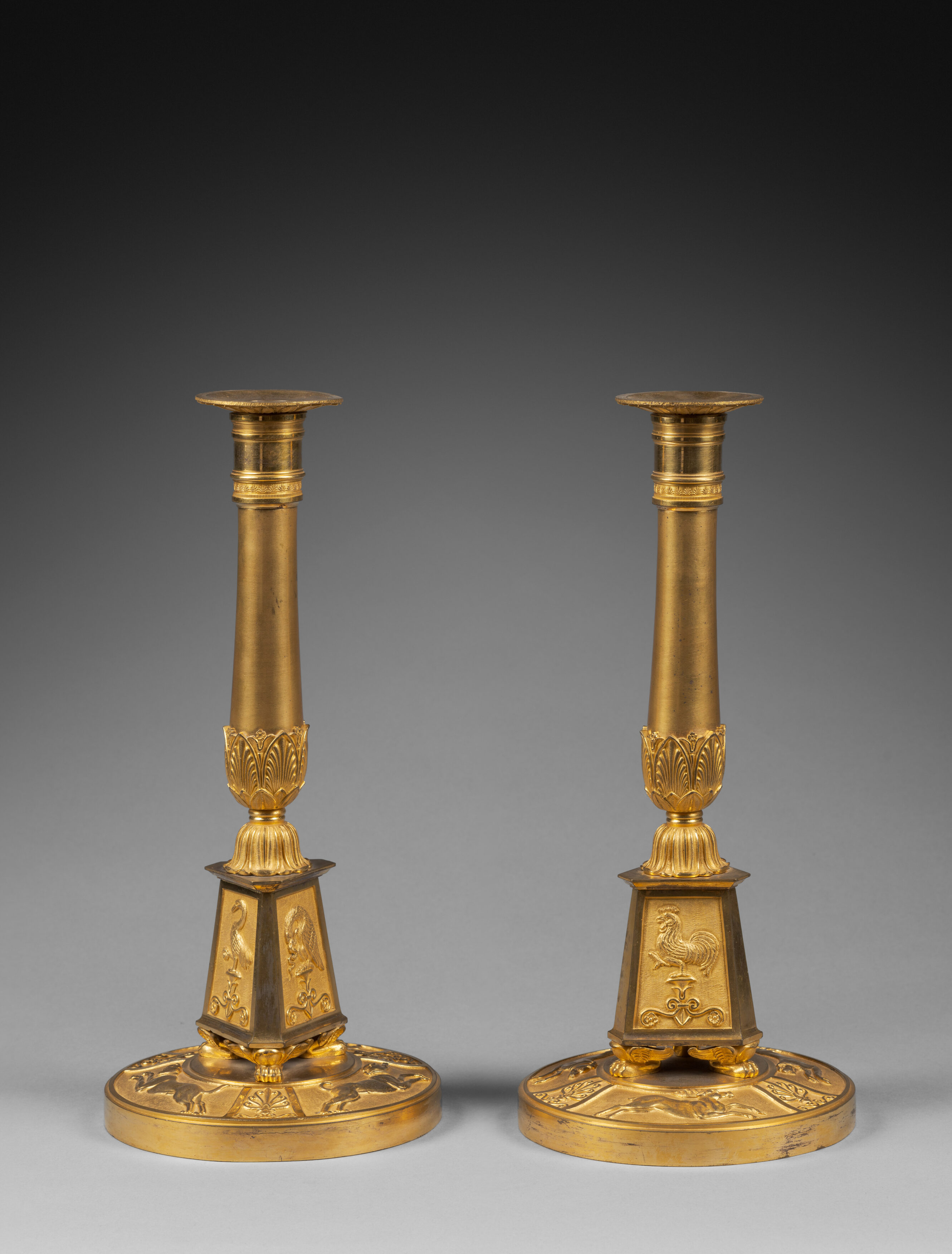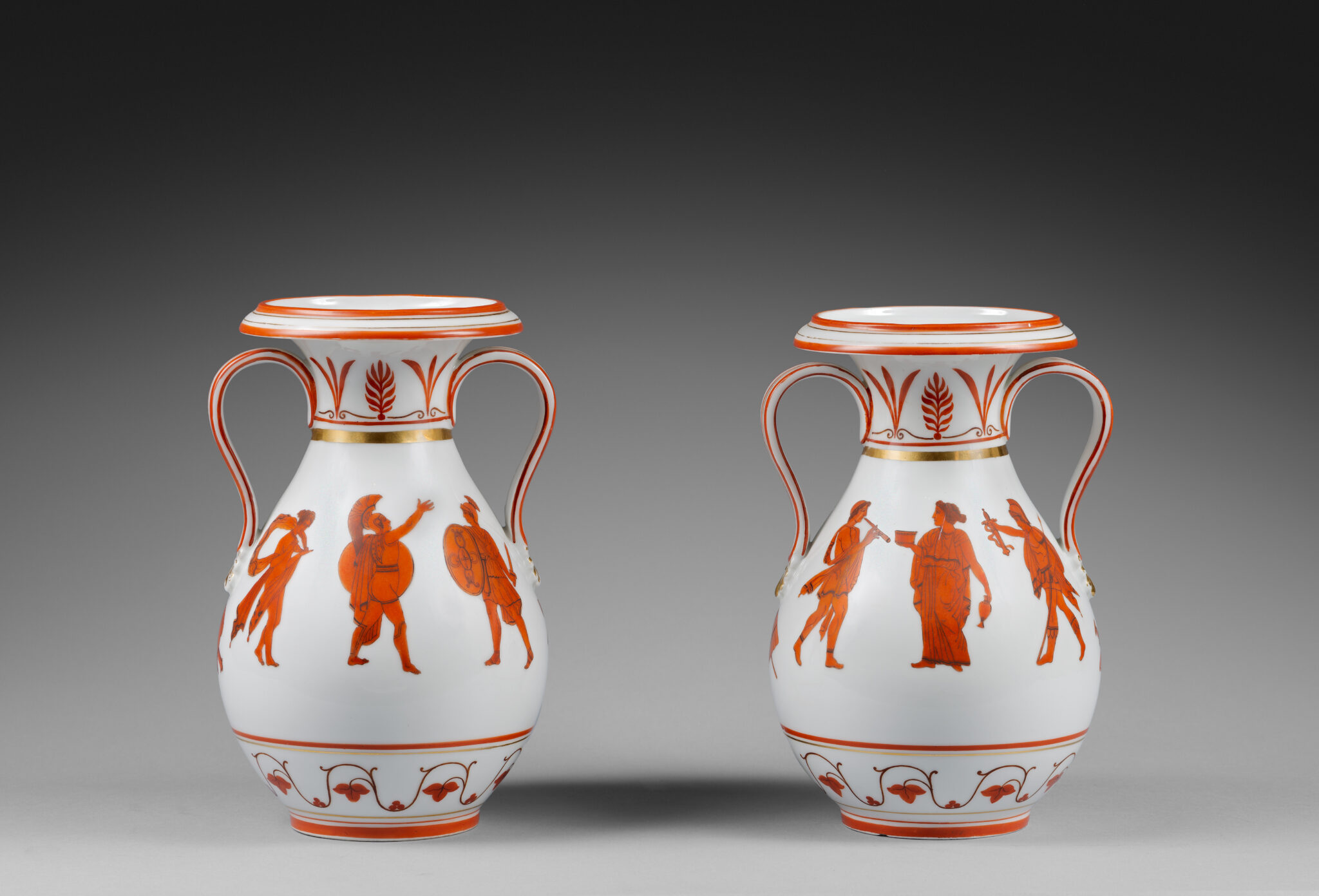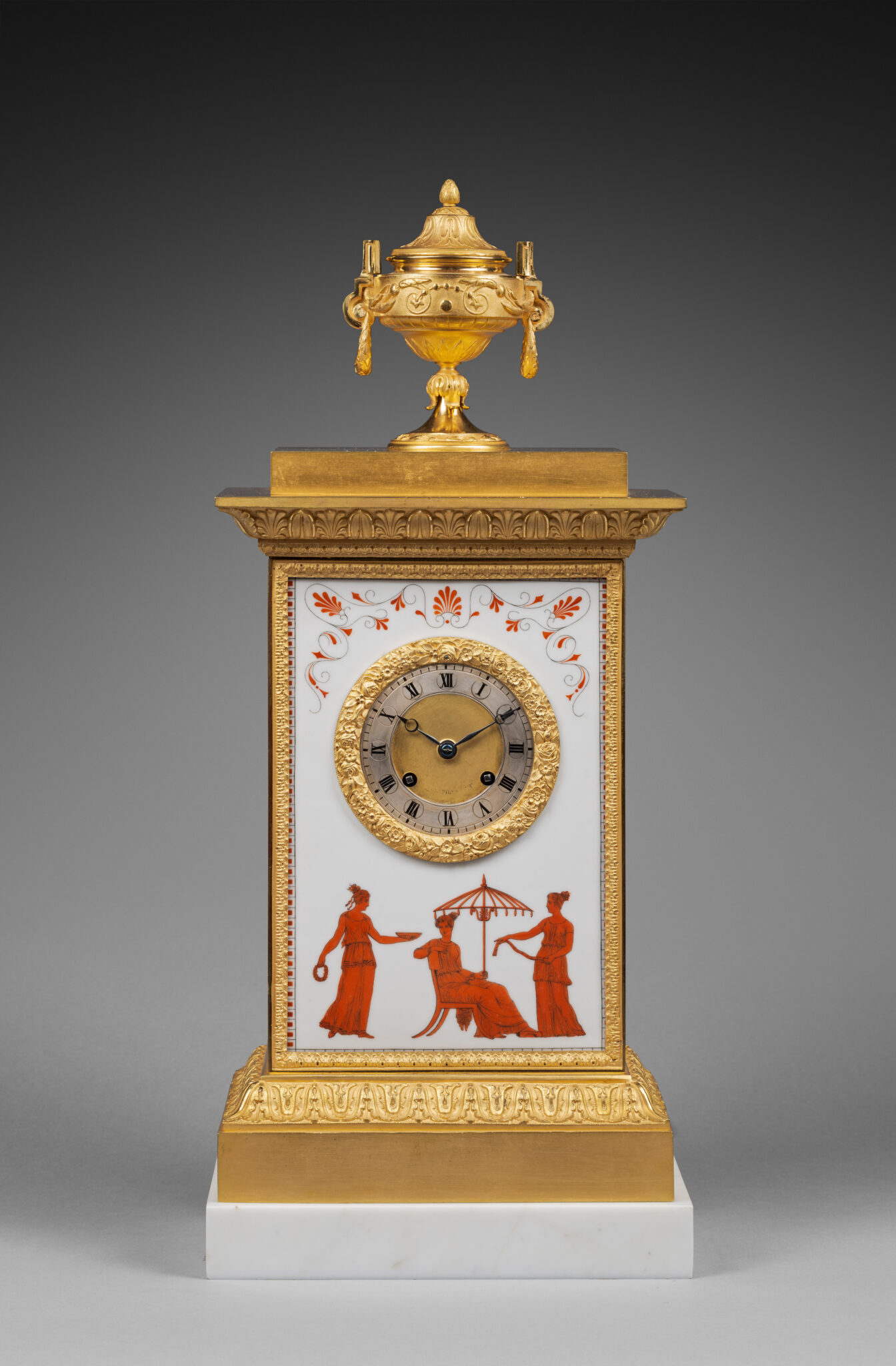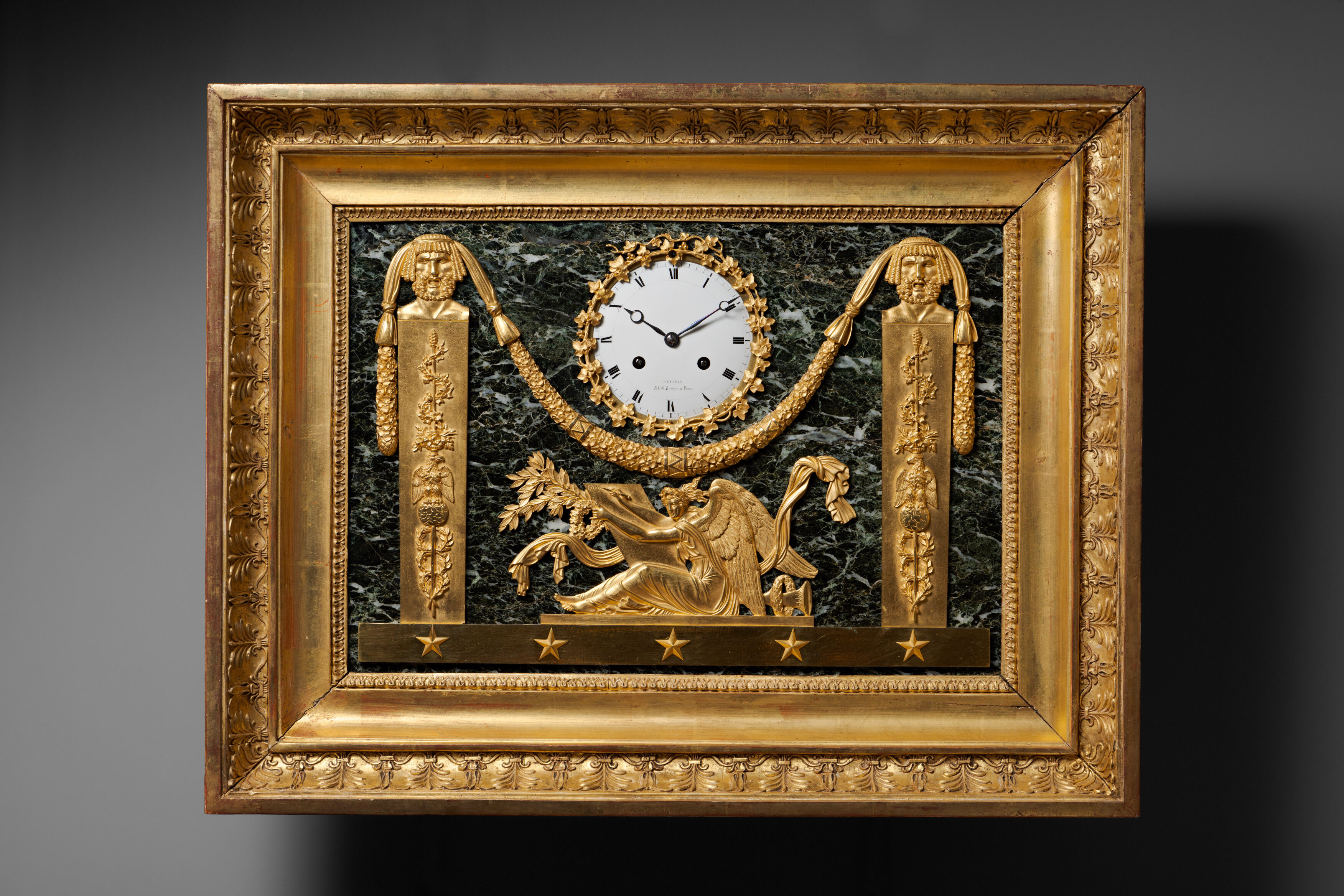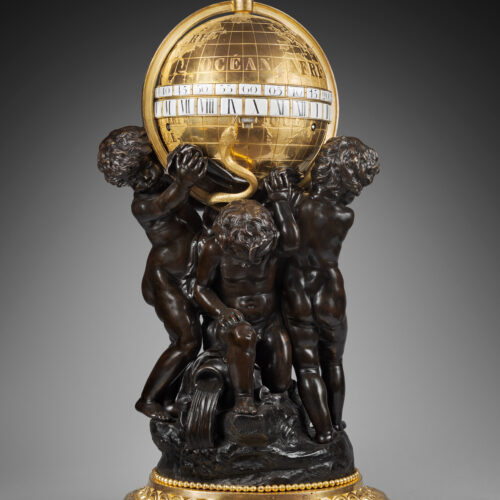Monumental Clock with Rotating Dials and Calendar, in Gilt and Patinated Bronze with Matte and Burnished Finishing
“Putti Carrying the Terrestrial Globe”
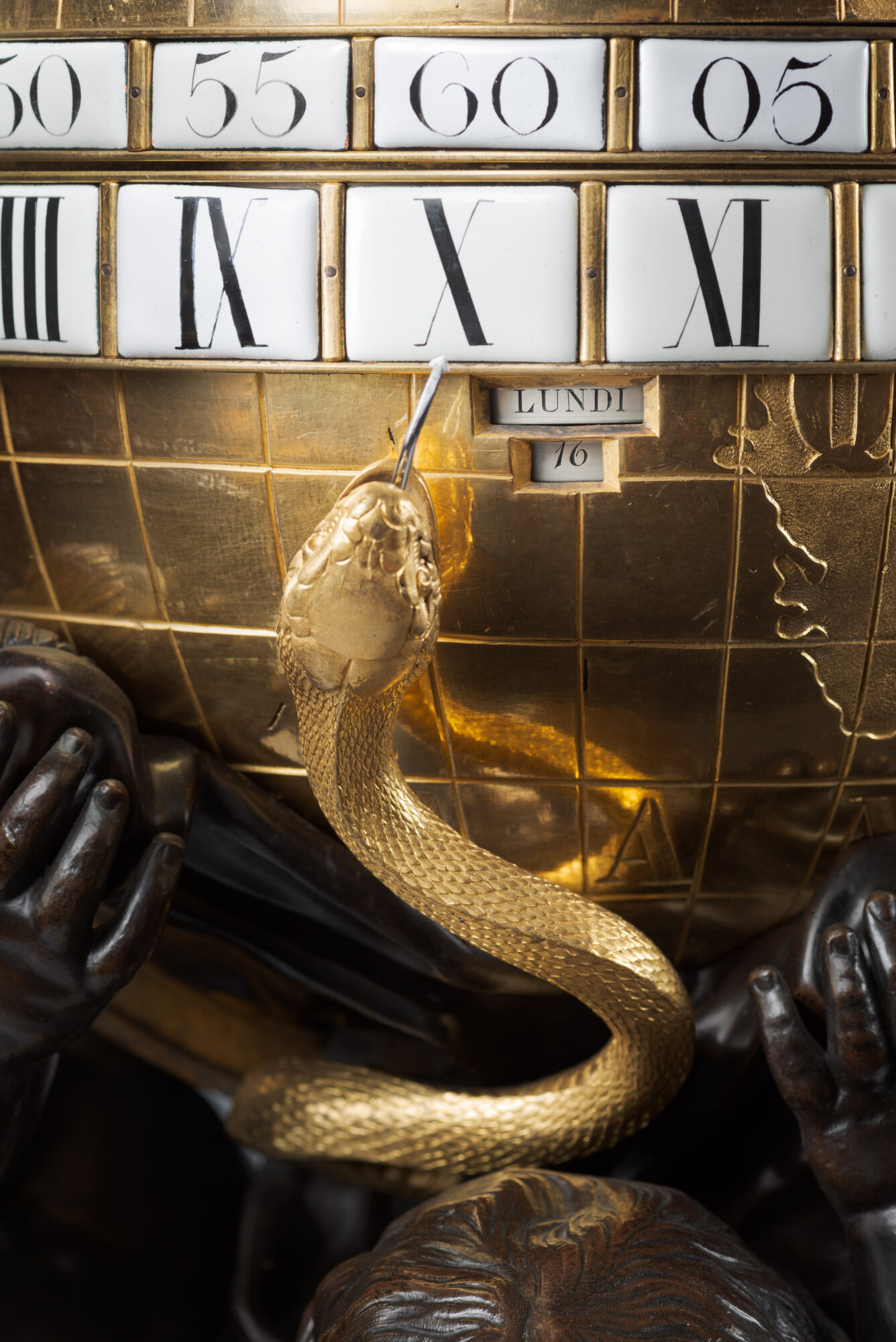
Attributed to Parisian Bronze-Caster Jean-François Denière
Paris, Restauration period, circa 1830.
The present clock, made of very finely chased gilt and patinated bronze with matte and burnished finishing, represents a terrestrial globe that is engraved with longitude and latitude markings along with the continents and oceans, marked with their names, and the meridian; it terminates in a molded knob handle. The globe houses the movement. At the equator there are two cadrans tournants (rotating dials) with enameled cartouches that indicate the Roman numeral hours and the Arabic numeral five-minute intervals. They surmount two small apertures in which are indicated the days of the week and the date. The tongue of a snake with finely chased scales points to the time. The globe is supported by three sculptural figures representing standing or kneeling putti. They are placed on a naturalistic rocky terrace that is embellished with drapery, tufts of grass, and an overturned urn whose contents are flowing out onto the ground. The circular base, which is decorated with a bead frieze, also features convex molding adorned with interlace friezes centered by flowers.
The present monumental clock was inspired by classical sculpture, and particularly by the Farnese Atlas supporting the Celestial vault, today in the Archeological Museum in Naples. The present clock stands out due to its monumental size and its original design. The high quality of its exceptional chasing, patina, and gilding often lead connoisseurs to suppose it dates from the Louis XVI period, but in fact it was made around the 1820s.
Among the small number of identical clocks known today (which, however, sometimes feature variations), one model, with a patinated bronze globe, is in the Calouste Gulbenkian Museum in Lisbon (Inv. 595).
A second example, whose movement is now lost, is in the Malmaison Museum (see the exhibition catalogue “La mesure du temps dans les collections du musée de Malmaison”, RMN, Paris, 1991, p. 42, catalogue n° 34). A third clock, bearing the mark of bronze caster Denière and thus allowing the model to be attributed to him, was offered for sale in Cannes in 1990. One further clock, which once belonged to clockmaker Benjamin Lewis Vulliamy, is on display in the Victoria & Albert Museum in London (Inv. 4311-1857; illustrated in Tardy, La pendule française des origines à nos jours, 2e Partie: Du Louis XVI à nos jours, Paris, 1974, p. 294).
Jean-François Denière (1774 - 1866)
The signatures “Denière” or “Denière Fabt de Bronzes à Paris” are that of Jean-François Denière (1774-1866), one of the most important Parisian bronze casters of the late 18th century and the early decades of the following century. In just a few years he became one of the most important suppliers of bronze furnishings, working for the imperial Garde-Meuble; in addition, he developed a wealthy private clientele. Until 1820 he was in partnership with François-Thomas Matelin, which led him to take part in the decoration of most of the imperial palaces and châteaux, delivering bronze furnishings and clocks, through the intermediary of several of their fellow bronze casters.
